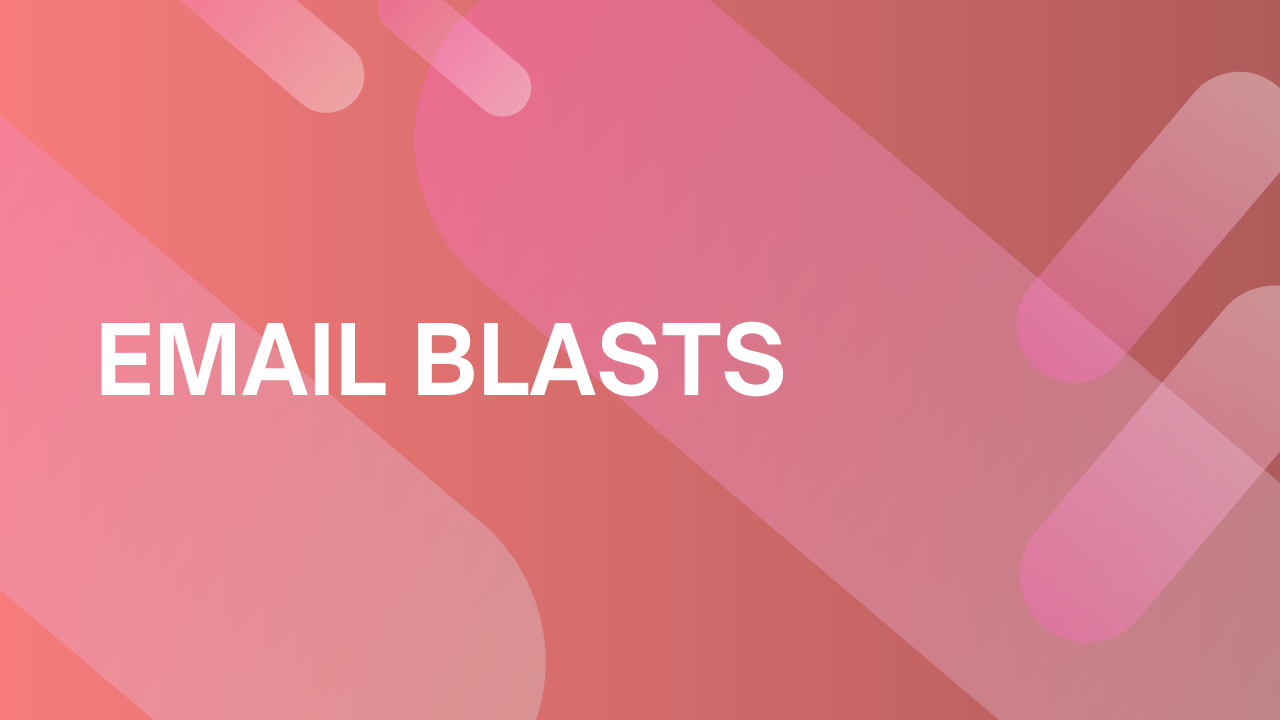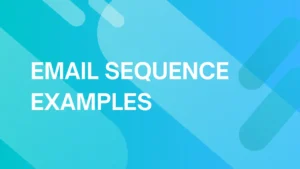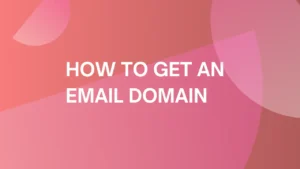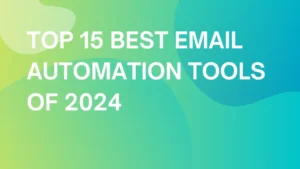
Email Blasts: What Are They & How to Send Them?
What is an email blast?
An email blast (sometimes referred to as an e-blast) is a common email prospecting technique that involves the distribution of a single email message to a large recipient list all at once.
Tip: Take a deep dive into “What is sales prospecting“
Unlike targeted marketing campaigns, email blasts don’t typically employ strategic targeting or segmentation, which is why they’re sometimes perceived as unsolicited or spammy types of communication.
Despite their broad nature, these blasts can be a great tool to touch base with a large group of people, aiming for visibility and reach rather than personal connection.
However, for more personalized communication, you might want to learn how to send an email to multiple recipients individually.
Is an email blast the same as an email bomb?
An email blast, in the context of marketing, refers to sending a single email to a large group of recipients at once. Email blast marketing is a legitimate marketing tactic used to broadcast information to a wide audience quickly.
Typically, these blasts are part of a broader marketing strategy and are used to inform, promote, or announce specific products, services, or events to a large audience.
On the other hand, an email bomb is an act of internet abuse and is considered a malicious attack.
It involves sending a large volume of emails to an individual or server, with the intention of overwhelming the system or harassing the recipient.
This can lead to overloaded email servers and can disrupt an individual’s ability to receive and manage their emails effectively.
Unlike email blasts, email bombs are not a part of any legitimate marketing practice and are often associated with spam or cyber attack tactics.
| Tip: If you would like to learn more about spammy practices in email marketing, make sure to check this article: 12 reasons your emails are being sent to spam. |
Should you consider email blasts?
The utility of email blasts has evolved over the years.
In the early days of digital marketing, they were a go-to strategy due to their ability to reach a broad audience quickly and the high return on investment (ROI) they offered.
These mass emails were almost akin to spam, given their wide, untargeted distribution.
However, digital communication has undergone significant changes.
Today’s sophisticated spam filters and the awareness of email users about spammy content have diminished the efficacy of this approach.
Despite these changes, email blasts aren’t entirely obsolete.
There are scenarios where sending a bulk email can be beneficial. However, it’s crucial to approach them with a modern perspective.
Email blast vs. email campaign
Understanding the difference between an email blast and an email campaign is key to using each effectively.
An email campaign is a sequence of emails sent to a specifically targeted group of recipients.
These campaigns are strategic and designed to build a relationship with the recipient over time.
They are often used to increase brand awareness, maintain regular contact, and ultimately drive sales.
Email campaigns are characterized by their targeted nature and the strategic planning that goes into crafting each message in the series.
In contrast, the primary goal of an email blast is to disseminate a message to as many people as possible through a single email.
This approach is less about fostering ongoing relationships and more about making an immediate impact.
While both email blasts and campaigns are integral to a comprehensive email marketing strategy, they serve distinct purposes and should be used according to their strengths and the specific goals of the marketing plan.
Advantages of email blast
Email blasts offer a range of advantages, particularly when used strategically within a broader marketing framework.
Let’s take a closer look at some of the key benefits that make email blasts a valuable tool for certain types of marketing communications.
a) They’re perfect for flash sales
The best time to send an email blast is when you want to advertise something quickly and to as many people as possible.
All you need is a direct, clutter-free approach that includes some catchy content, elements like great pricing and benefits, and a clear call-to-action (CTA) button prominently.
b) They’re a great way to test the waters
When it comes to understanding your audience’s preferences and response patterns, email blasts can be incredibly informative.
With a well-established subscriber base, these blasts tend to garner high open and response rates, leading to better conversion rates at a fraction of the cost of other marketing methods.
Using a robust email service platform makes it easier to track and interpret these key performance indicators, helping to refine future marketing strategies.
c) They can be used to announce new products
This is especially useful for companies that specialize in one single product.
For example, a seller focused on children’s clothing knows parents need to regularly replace clothing as kids grow, so a blast email advertising special sales or new product arrivals can be successful even without much targeting.
Disadvantages of email blast
a) It can lead to your emails being marked as spam
One of the primary risks of sending out email blasts is that your messages might end up in the spam folder.
This can result in error messages such as 550 high probability of spam, indicating that your email has been flagged by spam filters and is unlikely to reach the intended recipients.
This typically happens when the content of the emails is irrelevant to a large portion of the recipients.
As a result, these recipients may quickly dismiss the email, either by deleting it outright or moving it to their spam folder.
The risk here is twofold: not only do you lose engagement with your audience, but frequent markings as spam can harm your sender’s reputation.
| Tip: If you would like to learn how to avoid spam filters, make sure to check our article: How to prevent emails from going to junk. |
b) Email blasts are unpredictable
Another significant issue with email blasts is their lack of consistency.
Without a well-thought-out schedule and strategic planning, email blasts are sent sporadically and are not a regular occurrence.
This can lead to several problems:
- It does not allow users to familiarize themselves with your brand
- It fails to build an emotional connection with recipients
- It may raise doubts about the reliability of your business
c) There’s no segmentation
The main drawback of email blasts lies in their lack of segmentation.
Effective email marketing relies on understanding that not every message will resonate with every segment of your audience.
Segmentation allows marketers to tailor their messages to specific groups within their audience based on various criteria, including demographics, interests, geographic location, and behavioral patterns.
By neglecting segmentation, email blasts miss the opportunity to deliver targeted, relevant content — which in turn makes the email less effective.
How to send an email blast
Sending an email blast involves more than just hitting the ‘send’ button.
It’s a process that requires careful consideration and planning to ensure the message reaches its intended audience effectively.
1. Send to a clean email list
A clean and well-maintained email list is the most effective tool in email marketing.
In addition to cleaning your list with EmailListVerify, you should also make sure that you only acquire email addresses through legitimate means, where recipients have actively agreed to receive communications from you.
Not adhering to this can not only damage your relationship with your audience but also risk the effectiveness of your entire email marketing strategy.
During the list cleaning process, it’s essential to watch out for 550 permanent failure errors, which signify that an email address is invalid or no longer exists.
Regularly removing these addresses from your list can prevent damaging your sender’s reputation and reduce bounce rates, which in turn enhances overall deliverability.
This insertion provides practical advice on maintaining email list health and underscores the importance of managing bounce rates, which is crucial for successful email blast campaigns.
2. Use blasts only for specific reasons
For example, flash sales have a bigger impact when communicated through email blasts, as they quickly reache a large number of people, creating a sense of urgency and immediacy.
Email blasts can also be used to send newsletters out to ensure that every member of your audience is updated simultaneously.
Contests and giveaways also benefit from this approach, as the wide reach helps in garnering maximum participation.
3. Use an email service provider
An Email Service Provider (ESP) is vital for campaign management.
It provides tools to monitor and analyze the performance of your emails, ensuring you’re not just sending messages into the void.
ESPs also offer a range of services including pre-built email templates, landing pages, and drag-and-drop design editors, which are essential for crafting visually appealing emails without requiring in-depth technical knowledge.
Over time, as you gather data, ESPs facilitate the segmentation of your audience based on their interactions and behaviors.
This capability allows for more personalized and targeted email campaigns in the future, refining your sales prospecting techniques through effective communication and segmentation.
This capability allows for more personalized and targeted email campaigns in the future.
4. Add a touch of personalization
Despite the mass nature of email blasts, incorporating elements of personalization can significantly enhance their effectiveness.
Research has shown that segmented email campaigns drive 30 percent more opens and 50 percent more click-throughs than untargeted ones.
A simple approach to add personalization is to filter your list based on specific criteria, such as sending a welcome discount to subscribers who joined in the past three months.
5. Make it easy for people to say yes
Research by Constant Contact shows that 67 percent of email recipients say they’re more likely to buy if they’re offered a discount or coupon.
That’s because consumers are more inclined to engage with emails that offer tangible benefits, such as a great deal on a product.
A clear and compelling call to action (CTA) is also essential.
Make sure you craft your CTA in a way that makes it easy and attractive for recipients to take the desired action, whether it’s making a purchase, registering for an event, or simply learning more about a new product.
Additionally, be sure to grab your readers’ attention with high-quality email hooks.
Things to avoid when sending email blasts
Navigating the complex world of email marketing requires not only knowing what works but also understanding what doesn’t.
Certain practices in email blasting, though seemingly efficient, can actually backfire and damage a brand’s reputation and effectiveness in reaching its audience.
1. Don’t irrelevant email content
Firstly, mass mailing, a common but misguided approach, often leads to sending undifferentiated content to a vast audience without considering their unique preferences or behaviors.
This lack of personalization not only diminishes the potential impact of the message but also increases the risk of recipients disregarding the emails as irrelevant or, worse, marking them as spam.
The key issue here is the failure to acknowledge the diverse needs and interests of the audience, leading to a one-size-fits-all email that resonates with few, if any.
2. Avoid list linking
List linking, another questionable tactic, involves the sharing or merging of email lists without the explicit consent of the individuals on those lists.
This practice not only raises ethical concerns but also legal ones, particularly under regulations like GDPR.
It often leads to sending emails to recipients who have no prior relationship or interest in the brand, resulting in low engagement rates and potential damage to the sender’s reputation.
3. Don’t send large email attachments
Lastly, zip bombing, an even more problematic technique, involves sending emails with excessively large attachments.
This method can lead to significant issues like overwhelming recipients’ email storage, causing annoyance and potentially being flagged as malicious activity.
It’s a practice that’s not just ineffective but also counterproductive, as it strains the relationship between the sender and the recipient.
Email Blast Templates & Examples
To enhance the impact of your email blasts, make sure you follow these rules:
Tip #1 – Go heavy on visual elements
While a stunning product photo captures attention, consider introducing other visual elements (like videos and gifs) to keep your content fresh and engaging.
This not only breaks the monotony but also adds a dynamic touch to your message, making it more memorable:

Tip #2 – Keep it short
Email blasts tend to be short on text — just convey your key message in as few words as possible in the body of the email.
If you have more to say, a link to additional information can be included:

Tip #3 – Focus on the benefits
Tell readers why they want what you’re offering. What’s in it for them?
Here is a nice example of the email blast template that promotes product benefits right from the beginning:

Do email blasts work?
When done well, email blasts do work.
In fact, research by McKinsey & Company showed that email blasts yielded a 17% higher conversion rate compared to social media campaigns.
However, their success depends largely on the level of personalization incorporated into the message.
A personalized touch in these large-scale campaigns significantly enhances their impact, fostering better engagement and response rates.
| Tip: Besides personalization, you should always properly warm up your inboxes before you start sending email blasts to your email contacts. In order to do that, you can try Warmup Inbox and prepare your email addresses for any future email blasts or overall email campaigns. If you would like to learn more about the email-warmup process, make sure to check out our comprehensive Email Warm Up Guide. |



